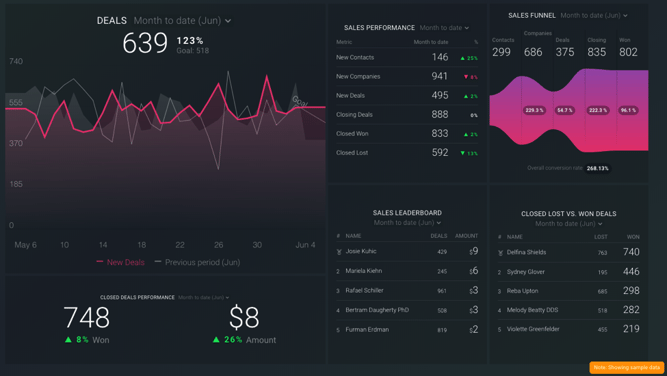 The proliferation of marketing channels, apps, mobile devices, social networks, and content has given consumers more choices and greater control while increasing complexity for marketers.
The proliferation of marketing channels, apps, mobile devices, social networks, and content has given consumers more choices and greater control while increasing complexity for marketers.
We want to help simplify and optimize the marketing planning process for your business.
Use the marketing game plan model featured in Chapter 10 of The Marketing Performance Blueprint to build core strength, spur growth through existing assets, connect actions to outcomes, and allocate resources based on performance. There are three phases—evaluate, establish and execute (e3)—made up of 15 steps.
Most organizations and enterprises should complete these steps at least annually to guide long-term planning. For small businesses, start-ups, and short-term goals, we'd recommend following Ready North's Marketing Growth HackathonTM to identify quick wins and accelerate success.
Evaluate (Steps 1 – 2)
The evaluation phase gathers intelligence into historical performance, technology infrastructure, success potential, marketing assets, competitors, industry trends, and resources.
While this is a critical stage, do not fall victim to planning paralysis. High performers differentiate by doing, not planning. Do your homework, put strategies in place, and then start testing and revising.
Step 1: Complete a marketing assessment.
Every marketing plan should start with an honest internal marketing assessment. The assessment should consider perspectives from multiple stakeholders, including marketing and sales leaders and key executives. The more involved all parties are in the entire strategic process, the easier it is to align needs, goals, expectations, and priorities.
The assessment challenges organizations to take a realistic look at potential and performance and ensure that marketing, sales, IT, and the executive team are aligned.
>> Related read: The Comprehensive Marketing Audit: 21 Questions to Guide Strategic Planning
Step 2: Conduct discovery research.
Carry out additional primary and secondary research to ensure you’ve thoroughly analyzed your company, audiences, competitors, and industry. Potential discovery research elements include:
- Competitor analysis (brand positioning, marketing strategies, pricing, product mix, website).
- Industry trends and reports.
- Internal brand surveys.
- Lead and customer database segmentation.
- Management team interviews.
- Marketing analytics reports (automation software dashboards, social, SEO, website).
- Website reviews (calls to action, content, design, landing pages, mobile compatibility, optimization).
Discovery research allows you to establish a strategy, confident that no stone has been left unturned.
Establish (Steps 3 – 13)
The establish phase defines budgets, goals, audiences, and campaign strategies.
Step 3: Calculate marketing budgets.
Determine budgets early in the process to build realistic marketing strategies based on available resources. If your expectations exceed your internal capabilities and capacity, then this also is the ideal time to evaluate outsourcing options.
When calculating marketing budgets, consider an ROI-based approach using historical performance data combined with future growth goals. Remember that increasing budget is just one way to achieve revenue goals. The preferred alternative is to focus on strategies that expand lead volume, improve lead-to-sale conversion rates and increase revenue per customer.
>> Related read: Point Pricing: The Story of How We (Finally) Eliminated Hours from Marketing Agency Pricing
Step 4: Build a marketing scorecard.
Marketing performance scorecards are simple to build and are increasingly efficient to maintain thanks to analytics platform APIs. APIs let you automatically pull data out of one source and place it into another. There are technology solutions that offer robust reporting and visualizations, but for many businesses, a straightforward Excel document or Google Drive spreadsheet with charts is a solid start.
Business intelligence tools can provide data visualization while emerging artificial intelligence solutions use natural language generation (NLG) and natural language processing (NLP) to create narratives based on data.
>> Download the Marketing Performance Pack for a template scorecard spreadsheet.
The key to an effective marketing scorecard is to align marketing KPIs with overall business goals, have a logical and well-documented process for updating and reporting results, and develop systems for turning data into intelligence and intelligence into action. Equally important is the need to pipe data into a single source of truth and visualize it. We recommend using a tool like Databox, which is a data visualization tool that enables marketers and business professionals to simplify and streamline specific KPI reporting using charts and graphs.

Step 5: Set prime goal values.
Once you have a representative sample of historical data in your scorecard, define benchmarks and goals. Rather than trying to set values for every marketing metric, focus on a select group of high-priority goals (e.g. website visitors, sales qualified leads, new customers, and monthly recurring revenue), and then assign monthly, quarterly, and annual goal values. Goals should be realistic and achievable based on your company's talent, technology, budgets, and potential for success.
Step 6: Define and segment audiences.
Marketing technology has made it possible to personalize every campaign and interaction. It starts with well-defined and segmented target audiences. Classifying audiences by name, priority (high, medium, low), size, and type (direct, borrowed, purchased) is helpful.
How effectively you develop and nurture relationships with your audiences can determine your organization's ability to build a strong brand, grow a talented team, create a powerful culture, gain exposure in priority markets, establish brand loyalty and affect the bottom line.
Step 7: Profile personas.
Develop a deep understanding of your audience personas. Personas are profiles or biographies of the people you plan to reach and influence. They are most often created for customers/buyers, but they should be defined for all priority audiences. Detailing personas makes it possible to humanize your marketing and your brand through a more personalized approach to communications.
>> Download the Marketing Performance Pack for a buyer persona checklist.
Step 8: Catalog accelerators.
Identify assets that can be leveraged to accelerate success and fuel marketing campaigns. Accelerators can be organized by status (opportunity, active), priority (high, medium, low), and type.
Example ways to classify the type of accelerator include:
- Audience lists (customers, influencers, leads, subscribers).
- Content (ebooks, white papers).
- Events.
- Digital marketing properties (mobile apps, websites).
- Partnerships.
- Speaking engagements.
- Sponsorships.
Marketing strategies with the greatest potential ROI tap into and maximize existing assets. You can build entire campaigns around accelerators. For example, a subscriber conversion campaign could be designed to move subscribers into the lead stage. Or, you can use assets such as an ebook to add value to emails as part of a lead nurturing campaign.
 Want to accelerate marketing planning? Host a Marketing Growth Hackathon. This fast-paced brainstorming session zeros in on steps 5 - 10, so you can spend less time planning—and more time doing.
Want to accelerate marketing planning? Host a Marketing Growth Hackathon. This fast-paced brainstorming session zeros in on steps 5 - 10, so you can spend less time planning—and more time doing.
Watch our free on-demand webinar, "How to Hold a Marketing Growth Hackathon," to learn more.
Step 9: Establish milestones.
List all company and industry events that may be relevant to the planning process, such as company announcements, conferences, industry report releases, product launches, and speaking appearances. Keep track of milestone dates in a central marketing calendar for easy reference when building strategies.
The marketing team can devise milestone-specific campaigns, as may be the case with a product launch, or use them to enhance ongoing programs, such as publishing a real-time blog post responding to a major industry study.
Step 10: Construct the campaign center.
A campaign is a series of projects designed to achieve a goal. Campaigns have target audiences, timelines, and budgets. There are two types of campaigns—builders and drivers.
Builders are recurring campaigns that lay the groundwork for future success. Builder campaigns, such as blogging and social engagement, are designed to create and expand assets on an ongoing basis. Drivers are campaigns that capitalize on existing assets to generate short-term returns and are often conducted over one- to three-month periods.
Think of builders as marathons and drivers as sprints. During the planning process, ensure your campaigns align with marketing goals, audiences, personas, accelerators and marketing milestones.
>> Download the Marketing Performance Pack for a campaign center template worksheet.
Step 11: Develop the project center.
Projects are a collection of activities that make up campaigns. Projects have tasks, hours (or a related measure of effort to complete), and goals.
Step 12: Integrate into a project management system.
Once your campaign and project centers are approved and ready for activation, move them into a project management system. In some cases, this may require manual entry of approved campaign activities, while other solutions offer the ability to import spreadsheets and automatically populate campaigns, projects, and tasks.
Step 13: Set up campaign tracking.
Establish a process to ensure that campaign names are consistent across analytics, project management, marketing automation, and marketing planning systems. This makes it far more efficient to track and report results.
Execute (Steps 14 – 15)
The execute phase is straightforward. Put the plans in motion and continually test and revise. Keep resources flexible to take advantage of real-time marketing opportunities and shifts in consumer behavior.
Step 14: Launch builder and driver campaigns.
Activate a mix of builders and drivers, starting with any foundation campaign work. For example:
- Content marketing editorial calendar.
- CRM optimization.
- Database segmentation.
- Lead scoring process.
- Marketing and sales integration.
- Marketing automation and analytics setup.
- Website redesign.
Once the foundation is in place, take a long-term approach to success with builder campaigns, such as blogging and social engagement, and use drivers to produce short-term results in leads, sales, and loyalty.
Step 15: Adapt activities based on performance.
Monitor analytics to deliver real-time insight and adapt activities based on performance. Use the marketing scorecard to regularly take stock of how campaigns are performing, and shift strategies and resources as needed to maximize ROI.
For complete details on all 15 steps of the process, refer to chapters 9 and 10 in The Marketing Performance Blueprint. You can also download the complementary Marketing Performance Pack workbook, which is filled with templates to help guide the planning process.
Accelerate Planning: The Marketing Growth Hackathon
For a condensed version of this process, host a Marketing Growth Hackathon. Our accelerated brainstorming session provides the framework and focus to help you prioritize marketing goals and identify campaigns with the greatest probability of impacting business results in the next 90 days.
Editor's note: This post was originally published in 2014 and has been updated to be more current and comprehensive.

%20Logo_BlueOrange_Trademark.png?width=800&height=269&name=Ready%20North%20(RN)%20Logo_BlueOrange_Trademark.png)




.jpg?width=300&name=Services%20Hub%203%20(3).jpg)


